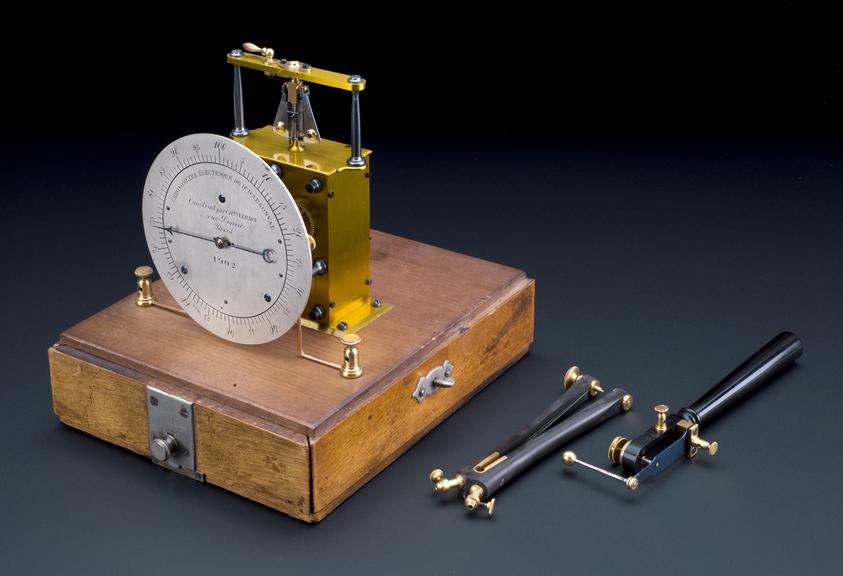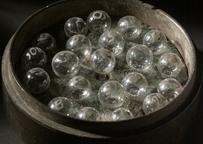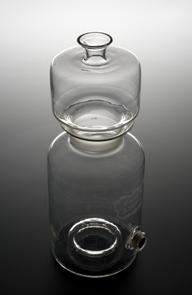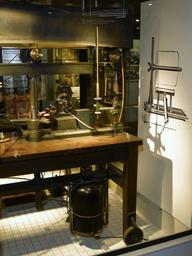


d'Arsonval electric chronometer, for measuring reflex reaction time, by Charles Verdin, Paris, 1902
This chronometer has been adapted to record the response time of a nerve to a stimulus. The patient is touched with the ball-topped metal rod, which has been charged by an electromagnet. Once they have felt the current, they press down on the tweezers-like rod in their hand. This cuts the current and holds the needle on the dial in place so a reading in hundredths of a second can be taken.
This chronometer was invented by Jacques-Arsène d'Arsonval (1851-1940), a biophysicist. His chronometer could determine the extent and location of damage to the nervous system, as injured nerves took longer to transmit stimuli.
Details
- Category:
- Laboratory Medicine
- Object Number:
- 1980-1109
- Materials:
- mahogany (wood), brass (copper, zinc alloy) and complete
- Measurements:
-
overall: 180 mm x 157 mm x 158 mm, 1.25 mm,
- type:
- chronograph - timer
- credit:
- Delehar, P.




